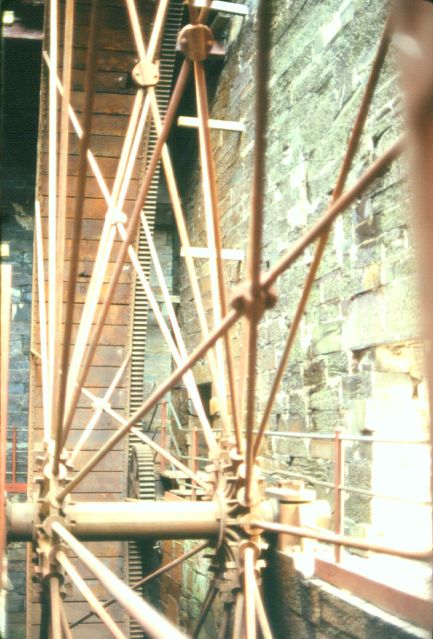

| From the town of Conwy on the north coast of Wales, a small train winds south through the heart of North Wales, through the tourist center of Betwys y Coed, and on to Blaenau Ffestiniog and points south. Along the way, it stops at the Roman Bridge Station, the closest to Yr Wyddfa (Mt. Snowden, the highest point in England and Wales at 1064 meters). Only a footpath, in places hard to distinguish, and often disappearing entirely, leads west across hummocky sheep pastures and a high ridge to a pass where three valleys lead off in different directions. Farther west is Yr Wyddfa, where Sir Edmund Hillary trained for his ascent of Mt. Everest. A nearby pub is home to other mountain climbers who leave their signatures on the ceiling. |
| Below, looking back towards the station from the base of the ridge, as it appeared when I visited the area in 1978. The day I arrived at Gatwick Airport near London was the day the rain returned after a long drought. While it had been a couple of weeks more before I made it to Wales, the area had not fully regained its green color. This was in mid-September. |
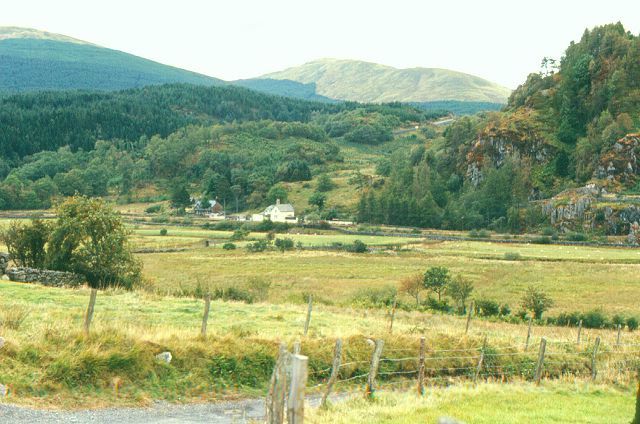
| Approaching the pass, the view of Pen Y Pass Youth Hostel at the top of the pass. |
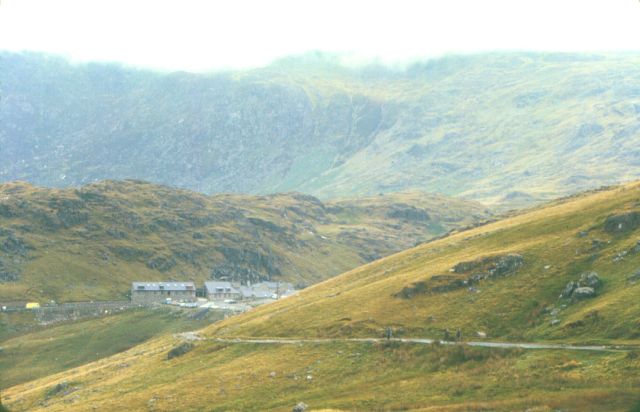
| The youth hostel provides a convenient base for exploration of Yr Wyddfa and the less overrun Glyders to the north, Glyder Fawr (999 m.) and Glyder Fach (994 m.), both of which are nearly as high as Yr Wyddfa. |
| Climbing the rugged east face of Yr Wyddfa below. Not apparent in the photo are the dozens of climbers on nearly every part of the mountain. |

| From the summit of Yr Wyddfa, looking back to the east. The Glyders rise to the left and Moel Siabod (872 m.) on the right. |
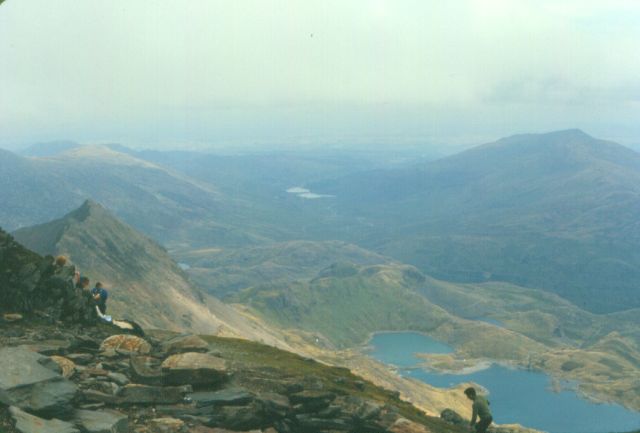
| The west side of Yr Wyddfa slopes gently down to the sea and the castle towns of Caernarfon and Bangor. Just across the Menai Strait from Bangor is the railway station of LlanfairPG, short for what is reputed to be the longest name of a railway station anywhere. At the northwest foot of the mountain is Llanberis, from which a cog railway takes tourists to the restaurant at the top of the mountain, and which provides an easy way back down. Just visible in front of the train is Llyn Padarn, one of the lakes upon which Llanberis is located. |
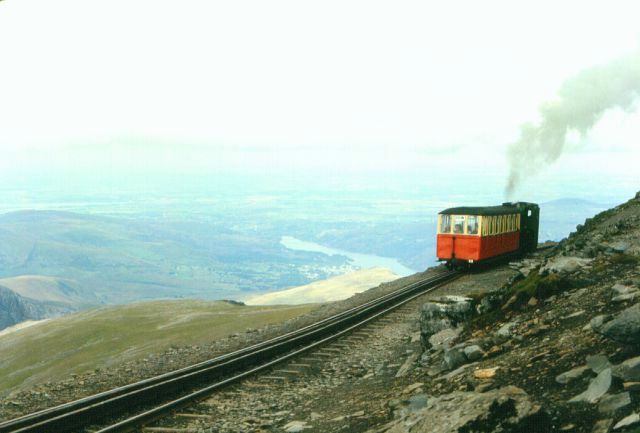
| Two views of Llanberis: |
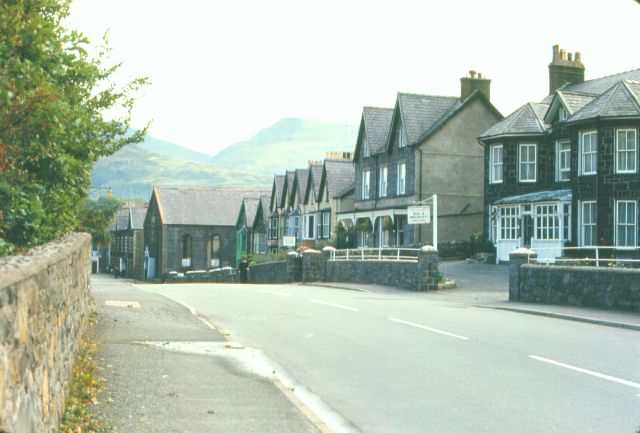
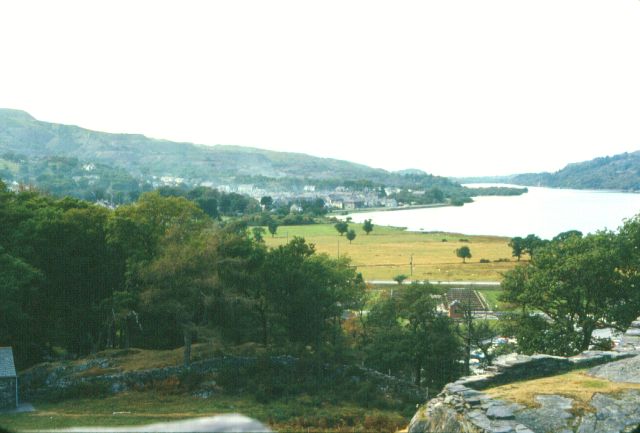
| Also located near Llanberis is the Welsh Slate Museum, which features a large iron casting shop. The museum has recently been completely refurbished. Before the quarry closed in 1969, it was one of the largest slate mines in the world. In the background is a wooden mold set in sand. The mold would be removed and the impression in the sand filled with molten iron to make a huge gear wheel. In the foreground are some other molds, mostly track parts, apparently. |
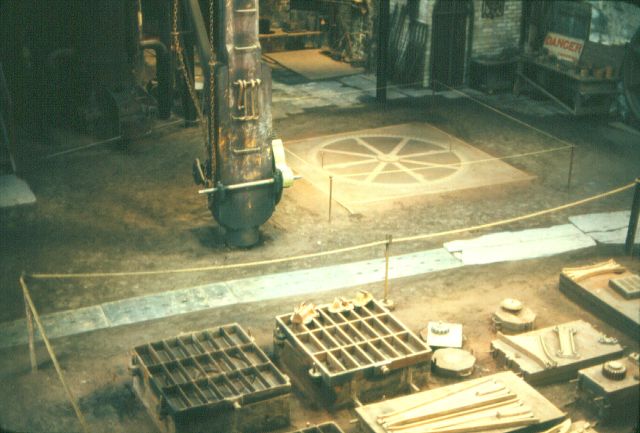
 |
Also located in the museum is the largest waterwheel in Wales. |
| South of Llanberis Pass is the valley of Nant Gwynant. Along the way is a memorial, dedicated in 1893, to William Gladstone, a Welshman who became the Prime Minister of Britain. The inscription reads, "Sep. 13th, 1892 -- Upon this rock the right honorable W.E. Gladstone, M.P., when Prime Minister for the fourth time and 85 years old addressed the people of Eryri upon justice to Wales. The multitude sang Cymric hymns and 'The Land of My Fathers.'" Not far beyond is the Bryn Gwynant Youth Hostel, an unusually plush setting for a youth hostel. |
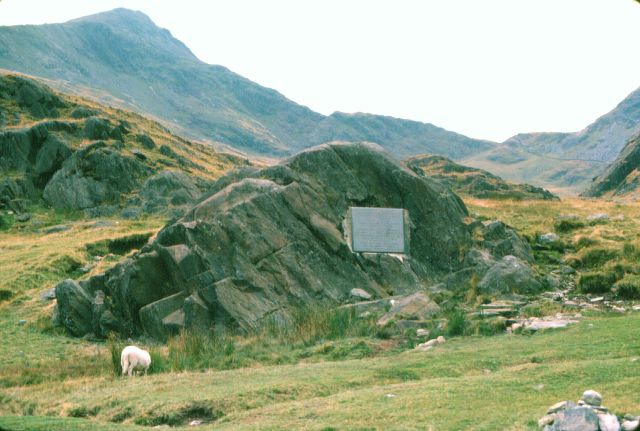
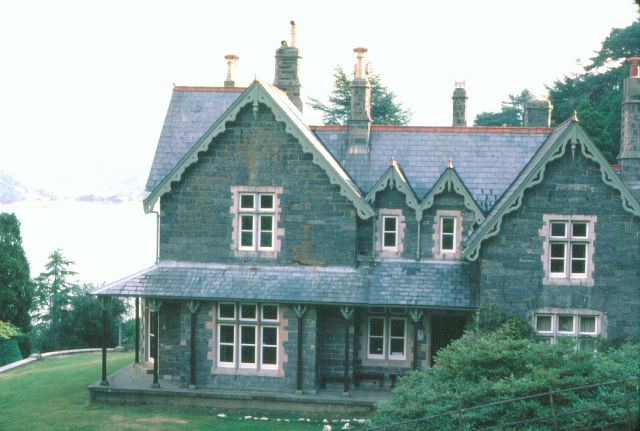
Click here for more information on the Snowden area and other environmental organizations with a focus on Wales.